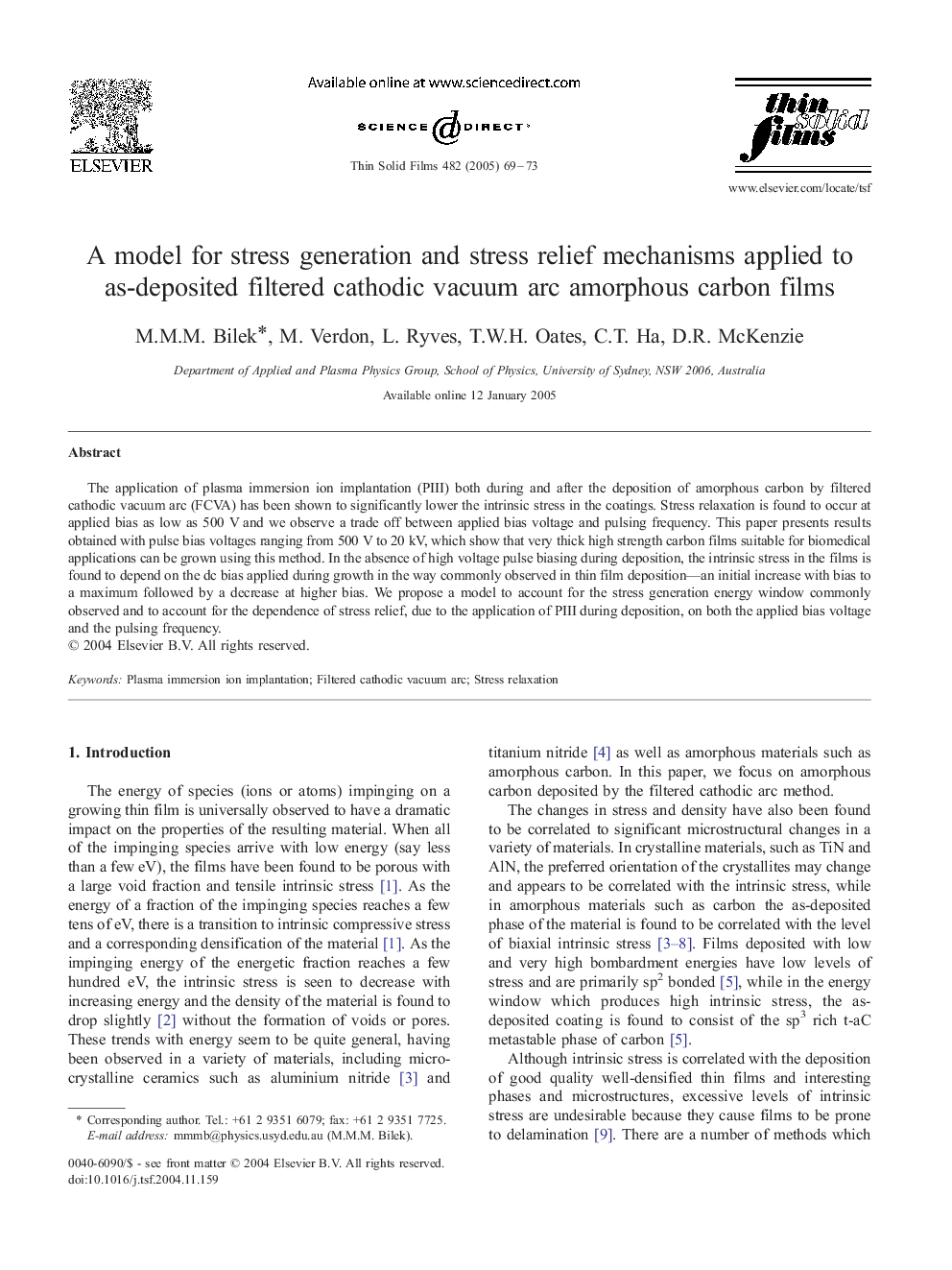| Article ID | Journal | Published Year | Pages | File Type |
|---|---|---|---|---|
| 9812670 | Thin Solid Films | 2005 | 5 Pages |
Abstract
The application of plasma immersion ion implantation (PIII) both during and after the deposition of amorphous carbon by filtered cathodic vacuum arc (FCVA) has been shown to significantly lower the intrinsic stress in the coatings. Stress relaxation is found to occur at applied bias as low as 500 V and we observe a trade off between applied bias voltage and pulsing frequency. This paper presents results obtained with pulse bias voltages ranging from 500 V to 20 kV, which show that very thick high strength carbon films suitable for biomedical applications can be grown using this method. In the absence of high voltage pulse biasing during deposition, the intrinsic stress in the films is found to depend on the dc bias applied during growth in the way commonly observed in thin film deposition-an initial increase with bias to a maximum followed by a decrease at higher bias. We propose a model to account for the stress generation energy window commonly observed and to account for the dependence of stress relief, due to the application of PIII during deposition, on both the applied bias voltage and the pulsing frequency.
Related Topics
Physical Sciences and Engineering
Materials Science
Nanotechnology
Authors
M.M.M. Bilek, M. Verdon, L. Ryves, T.W.H. Oates, C.T. Ha, D.R. McKenzie,
